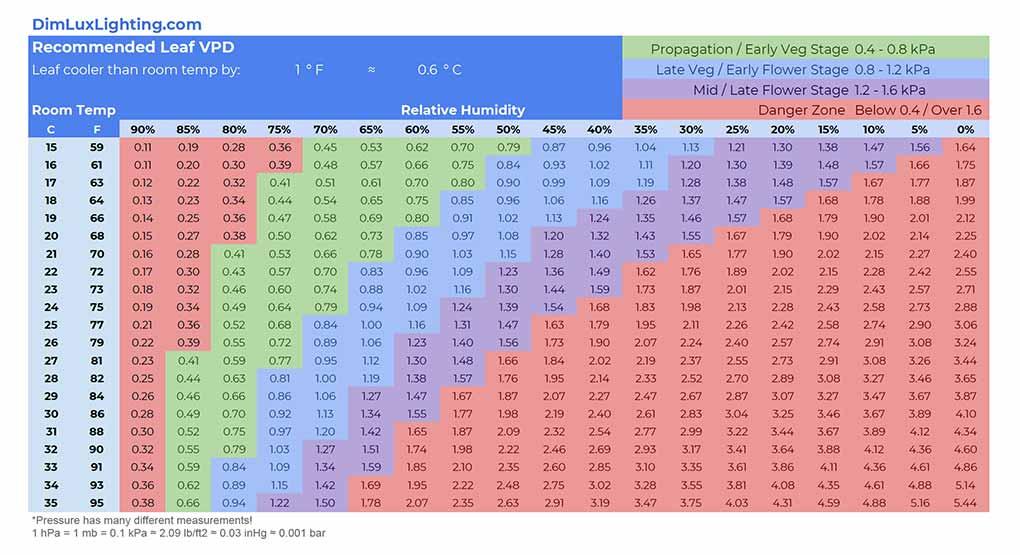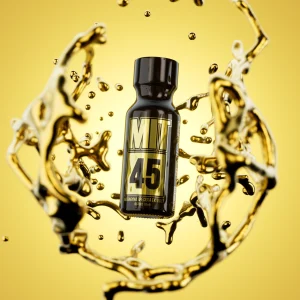Embark on a journey where science meets nature in the realm of cannabis cultivation. In this article, we delve into the intriguing world of cannabis VPD (Vapor Pressure Deficit) – a crucial factor that influences the growth and development of this versatile plant. Join us as we unravel the mysteries behind VPD and discover how it plays a significant role in maximizing the potential of your cannabis crops. Let’s explore the balance between art and science in the quest for optimal growth conditions for your beloved cannabis plants.
Table of Contents
- Understanding Cannabis VPD: The Key to Optimal Growth
- Unlocking the Relationship Between Vapor Pressure Deficit and Plant Health
- Maximizing Yield Through Proper VPD Management
- Practical Tips for Controlling VPD in Your Cannabis Grow Operation
- Q&A
- Closing Remarks
Understanding Cannabis VPD: The Key to Optimal Growth
When it comes to cultivating cannabis, maintaining the right Vapor Pressure Deficit (VPD) is crucial for achieving optimal growth and maximizing yields. Understanding VPD involves finding the perfect balance between humidity and temperature within your grow environment. This balance directly impacts the rate of transpiration in plants, influencing nutrient uptake and overall plant health.
**The key factors to consider when managing Cannabis VPD are:**
- Humidity levels: Ensuring the humidity is at the appropriate range for each stage of plant growth.
- Temperature control: Maintaining consistent temperatures to avoid fluctuations that can disrupt VPD.
- Air circulation: Proper airflow to prevent humidity pockets and maintain a balanced VPD throughout the grow space.
**Here is a simple guide to optimizing Cannabis VPD levels:**
| Stage | Optimal VPD Range |
|---|---|
| Propagation | 0.4-0.8 kPa |
| Vegitative | 0.8-1.2 kPa |
| Flowering | 1.2-1.6 kPa |


Unlocking the Relationship Between Vapor Pressure Deficit and Plant Health
Understanding the delicate dance between Vapor Pressure Deficit (VPD) and plant well-being is crucial for cultivators looking to optimize their cannabis growth. Maintaining the ideal VPD range is akin to harmonizing a plant’s environment to orchestrate optimal growth conditions.
<p>In essence, VPD represents the difference between the actual vapor pressure in the air and the saturation vapor pressure at a specific temperature. This differential influences transpiration rates, nutrient uptake, and overall plant metabolism.</p>
<p>By striking the right balance in VPD, growers can encourage proper stomatal functioning, ensure efficient CO<sub>2</sub> exchange, and foster robust plant development. Harnessing VPD as a tool rather than a mystery unlocks the gateway to nurturing healthier, more vibrant cannabis crops.</p>

Maximizing Yield Through Proper VPD Management
Controlling the vapor pressure deficit (VPD) in your cannabis cultivation environment is crucial for maximizing yields and ensuring optimal plant health. By carefully managing the temperature and humidity levels within your grow space, you can create the perfect VPD conditions that promote vigorous growth and robust flowering.Benefits of Proper VPD Management:
- Enhanced nutrient uptake and assimilation
- Increased photosynthetic efficiency
- Reduced risk of pest and disease infestations
- Improved trichome production for higher-quality buds
Maintaining the ideal VPD range for each stage of plant growth is key to unlocking the full genetic potential of your cannabis plants. Whether you’re in the vegetative phase focusing on lush foliage development or transitioning into the flowering stage for optimal bud production, monitoring and adjusting VPD levels can make a significant difference in overall crop yield and quality.
Optimizing VPD Levels for Different Growth Phases:
| Growth Stage | Temperature Range | Humidity Range |
|---|---|---|
| Vegetative | 70-85°F | 40-60% RH |
| Flowering | 65-80°F | 40-50% RH |
| Late Flowering | 60-75°F | 30-40% RH |
By understanding the importance of VPD and implementing strategies to manage it effectively, you can fine-tune your cannabis growing operation for optimal results. Remember, a well-controlled VPD not only boosts yields but also contributes to healthier, happier plants that are more resilient to stressors, ultimately leading to a successful harvest.

Practical Tips for Controlling VPD in Your Cannabis Grow Operation
The key to maintaining optimal Vapor Pressure Deficit (VPD) levels in your cannabis grow operation lies in fine-tuning the environmental conditions. One practical tip is to regularly monitor and adjust the temperature and humidity levels within your grow space. Ensuring that these factors are within the ideal range can significantly impact plant health and growth.Another useful strategy is to invest in a high-quality VPD sensor that can provide real-time data on the VPD levels in your grow room. Using this data, you can make informed decisions on when to adjust environmental controls such as ventilation, dehumidification, or misting systems to keep VPD levels in check.
Additionally, incorporating proper air circulation through fans or an HVAC system can help maintain uniform VPD levels throughout the entire grow space. This airflow not only aids in temperature and humidity distribution but also ensures that plants receive an adequate supply of CO2 for photosynthesis. By implementing these practical tips and staying vigilant in monitoring VPD levels, you can create an optimal environment for healthy cannabis plants to thrive.
Q&A
Q: What is Cannabis VPD and why is it important for plant growth?A: Cannabis VPD, which stands for Vapor Pressure Deficit, is a crucial factor in indoor cannabis cultivation that influences plant transpiration and overall growth. By maintaining the right VPD levels, growers can optimize photosynthesis, nutrient uptake, and resin production in cannabis plants.
Q: How can growers calculate and adjust Cannabis VPD in their grow rooms?
A: Growers can calculate Cannabis VPD by measuring the temperature and relative humidity in their grow rooms, then using a VPD chart or calculator to determine the ideal range. Adjusting VPD can be done by controlling temperature, humidity, and airflow to create the optimal environment for cannabis plants to thrive.
Q: What are the effects of incorrect VPD levels on cannabis plants?
A: Incorrect VPD levels can lead to issues such as stunted growth, nutrient deficiencies, pest infestations, and decreased resin production in cannabis plants. Maintaining the right VPD range is essential to prevent stress and maximize yield and quality during the cultivation process.
Q: Why is monitoring Cannabis VPD a continuous process for growers?
A: Monitoring Cannabis VPD is a continuous process for growers because environmental conditions can change throughout the day and during different stages of plant growth. By regularly assessing and adjusting VPD levels, growers can ensure their cannabis plants receive optimal conditions for healthy development and maximum productivity.





0 Comments